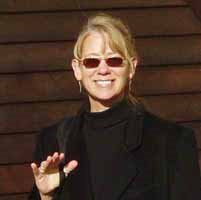This recipe serves 6.
For the beans:
2 cups navy or Great Northern beans (soaked for 12 hours, change the water a few times)
bundle together with kitchen string:
a few sprigs of parsley, thyme, and rosemary
1 bay leaf
1 celery stalk, cut in half
1 green end of a leek
1/2 of a medium onion
1 whole clove (press it into the onion half so it doesn't get lost in the beans)
1 medium carrot, peeled and cut in half
1 can whole peeled tomatoes with juice, chopped
2 ounces salt pork (also called fatback), cut into 1/2" cubes
1/2 lb. pork shoulder, cut into 3/4" cubes
1 smoked ham hock
1 T. olive oil
The rest of the ingredients for the cassoulet:
1 garlic clove
2 legs duck confit, remove and save some of the confit fat, remove skin (discard), pull meat from bones
1/2 lb. garlic sausage, cut into 1/2" slices (about 3 sausages)
4 cups very course breadcrumbs or croutons (I cut up stale bread, toss it with olive oil, salt and pepper, dry it out in a low oven for half an hour, then crush into rough breadcrumbs.)
Cook the beans:
• Bundle the parsley, bay leaf, rosemary, thyme, celery, and leek with kitchen string.
• Heat olive oil in large pot. Add salt pork and cook until golden (about 5 minutes). Add the pork shoulder and brown on all sides (about 8 minutes).
• Add the remaining ingredients to the bean pot: the bundled herbs, onion half with whole clove, carrot, tomatoes and their juice, ham hock, and the soaked beans. Add enough cold water to cover by 1 to 2 inches (about 8 cups). Bring to a boil, reduce heat, and simmer until beans are tender but not falling apart (40 to 50 minutes). (I used a pressure cooker to make the beans and it only took 14 minutes.)
Prepare the cassoulet—preheat the oven to 300°:
• When the beans are done, discard the onion, carrot, and herb bundle. Transfer the ham hock to a cutting board and remove the meat when it is cool enough to handle. Dice the meat and return it to the bean pot. (I read another recipe that had you puree the meat with a garlic clove to make a paste, then stir it into the beans.)
• Use the confit duck fat to saute the sausage pieces just until browned on each side. Set aside.
• Rub the cut side of a piece of garlic over inside of a dutch oven. Use a slotted spoon to transfer half of the beans to the dutch oven, spreading it evenly.
• Arrange the sausage and duck confit on top of the beans and cover with the remaining beans. Snug the ingredients and smooth the top.
• Add cooking liquid to almost cover the beans but not quite. Reserve the remaining cooking liquid. Transfer the pot to the oven and cook, uncovered, for 2 hours. Check every 30 minutes and add more cooking liquid as needed to keep the level just below the surface. Do not stir.
• After the cassoulet has cooked for 2 hours, arrange the breadcrumbs over the surface. Cook another 1 to 1 1/2 hours until beans are tender.
Cahors is the recommended wine for cassoulet. Our guests brought a salad and glazed carrots as a side dish. Creme brulee and brandy were the perfect ending to the meal, though no one could move from the dinner table.
It sounds like a lot of work, but it is a winter necessity at least once a year. Believe it or not, this is a fairly quick rendition of the dish—I've made the recipe from the Silver Palate New Basics cookbook and it took two days. This recipe is from an old Martha Stewart Living article I happened upon.





